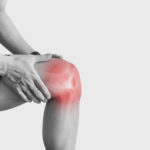November 4, 2018
Painkillers, also known as opioids or opiates, are commonly prescribed to treat chronic pain. While painkillers can effectively help reduce pain, these medications offer a high risk of dependence and addiction and are misused by roughly 29% of people who take them for chronic pain. Prescription opioids are also involved in more than 40% of opioid overdose deaths in the U.S., with roughly 46 people dying every day from painkiller-related overdoses.
Fortunately, painkillers aren’t the only way to effectively treat and relieve chronic pain.
Here are 7 safe ways to manage chronic pain without opioids, so you can benefit from relief without facing the risk of opioid dependence, addiction, and overdose.
1. Occupational and Physical Therapy
An occupational therapist helps you improve your ability to perform normal daily tasks like using stairs and getting out of chairs without suffering severe pain. A physical therapist can realign your joints and bones and increase your mobility to treat the physical impairment causing chronic pain. Occupational and/or physical therapy may help you avoid surgery and the need for painkillers as you continue recovering from the source of your pain.
2. Acupuncture
Acupuncture is an ancient Chinese medical practice that reduces pain by improving imbalances in the body related to hormones, neurotransmitters, and immunity — all of which are underlying factors that may contribute to chronic pain. During acupuncture treatment, an experienced practitioner inserts between 5 and 20 tiny thin needles into the skin at specific points to help reduce pain. Acupuncture doesn’t hurt but may cause slight tingling at each needle insertion site.
3. Massage Therapy
Chronic pain is often caused by tension and stiffness in muscles — particularly in the back. Massage therapy helps loosen muscles and reduces tension to relieve chronic pain. Evidence suggests that massage therapy is most effective at reducing chronic pain in the lower back, knees, and neck, as well as labor-related pain in pregnant women.
4. Physical Activity
Many who suffer chronic pain think that relaxing and “taking it easy” is best for healing and pain relief. But exercise and physical activity strengthen your muscles and immunity, while also stimulating your body’s production of endorphins — chemicals that naturally reduce pain by altering the body’s perception of pain. Work with your doctor on developing a safe exercise routine with activities like swimming or biking that can help reduce pain.
5. Spinal Manipulation
Healthcare professionals who perform spinal manipulation use their hands or a device to apply a controlled force to one or more joints in the spine causing chronic pain. This treatment improves your body’s functioning so you can move more freely and suffer less pain. Side effects of spinal manipulation are usually minor and include feeling tired and temporary soreness.
6. Biofeedback
This pain management tool monitors heart rate, breathing rate, and muscle tension so you can improve the way you do these things to reduce chronic pain. Biofeedback is painless and only requires you to wear electrodes attached to a machine that tracks each of these body functions. This treatment benefits those who suffer headaches, muscle tension and pain, chronic pain in the neck or back, and stress-induced pain.
7. Non-Opioid Drugs
Numerous recent studies show that over-the-counter medicines like acetaminophen and ibuprofen are more effective than opioids at treating pain. These OTC drugs are not habit-forming or addictive and therefore won’t lead to dependence and overdose. However, these drugs still pose serious risks when used long-term and shouldn’t be used indefinitely to treat chronic pain. Acetaminophen carries the risk of liver toxicity, while ibuprofen carries the risk of gastrointestinal irritation and ulcers.
Healthcare Associates of Texas can work with you to identify the source of your chronic pain so you can be treated for the root cause. Request an appointment today to begin the treatment process and get started on the road to improved health and safe pain management.
References:
https://www.drugabuse.gov/drugs-abuse/opioids/opioid-overdose-crisis
https://www.cdc.gov/drugoverdose/data/prescribing.html
https://otaonline.stkate.edu/blog/fields-occupational-therapy-and-physical-therapy-whats-difference/
https://www.health.harvard.edu/blog/acupuncture-is-worth-a-try-for-chronic-pain-201304016042
https://nccih.nih.gov/health/massage/massageintroduction.htm
https://www.ncbi.nlm.nih.gov/pubmed/6091217
https://nccih.nih.gov/health/pain/spinemanipulation.htm
http://www.upstate.edu/pmr/healthcare/programs/biofeedback.php
DISCLAIMER
The information featured in this site is general in nature. The site provides health information designed to complement your personal health management. It does not provide medical advice or health services and is not meant to replace professional advice or imply coverage of specific clinical services or products. The inclusion of links to other web sites does not imply any endorsement of the material on such websites.



